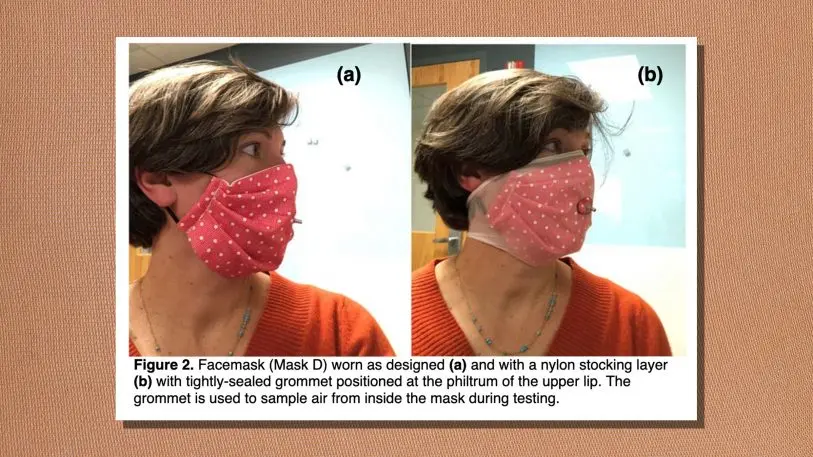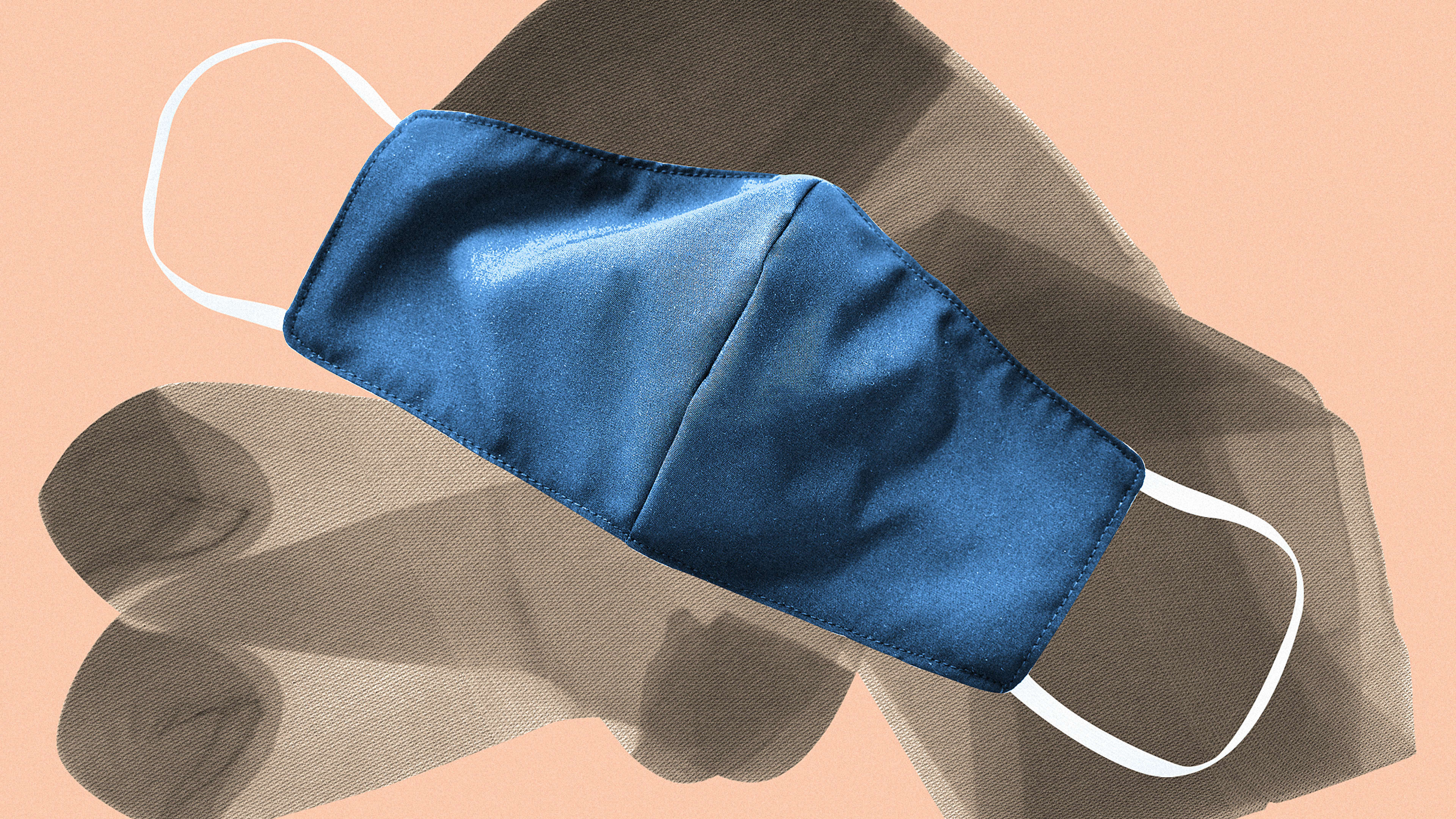Have you been worried about how many germs your homemade mask is actually filtering? Researchers have found a simple hack that could boost the effectiveness of any mask, including the DIY one you made from an old T-shirt or tea towel.
A new paper from two assistant professors of civil and environmental engineering at Northeastern University found that cutting up a pair of nylon pantyhose and wearing it over your face mask boosted the mask’s filtration to that of a medical-grade surgical mask. Loretta Fernandez, one of the researchers who conducted the study, explained to NPR that the nylon layer created a tighter seal across the face, reducing the air and droplets that were able to enter through the side.
Homemade masks vary widely in terms of their design and, by extension, their filtration ability. The Northeastern researchers found that adding the nylon layer improved the performance of a DIY mask by between 15% and 50%.
In some cases, adding this layer allowed the homemade mask to achieve the same performance as a 3M surgical mask, which blocks out 75% of small particles, including those the size of the coronavirus. In fact, when nylon tights were worn on top of 3M surgical masks, they were able to block 90% of particles. (The N95 respirator mask—which is currently in short supply around the world—blocks at least 95% of small particles when worn properly.)

This study has not yet been published in a peer-reviewed journal. For now, it appears on Northeastern’s website. NPR reported on the study last week and consulted with several scientists who all said it was a promising line of research.
In mid-April, the CDC recommended that all Americans wear face masks in public settings in order to prevent the wearer from spreading germs to other people if they were infected with the coronavirus but weren’t showing symptoms. But cloth fabrics are porous and aren’t particularly effective at preventing germs from entering the wearer’s mouth and nose. “However, the new research shows that with the added nylon layer, homemade masks may also offer lots more benefit for the wearer,” NPR reports.
So if you’re looking to boost the effectiveness of your homemade mask with this pantyhose hack, what’s the best way to get started? Fernandez has some tips. She recommends buying a queen-size pair of pantyhose, since it’s easier to breathe through this size. Cut out a ring between 8 and 10 inches in length from the leg. When you need to mask up, put your cloth mask on first, then put the ring of nylon on your head like a headband and slowly pull it over your mask, creating a tight fit on the face.
While the researchers don’t specify whether you should wash the nylon layer after each use, experts recommend laundering face masks after each wear, so it would be safe to assume the same applies to the pantyhose as well. Some scientists who reviewed this study point out that more research needs to be done, including how many times nylon can be washed before it becomes less effective.
Recognize your brand’s excellence by applying to this year’s Brands That Matter Awards before the early-rate deadline, May 3.
